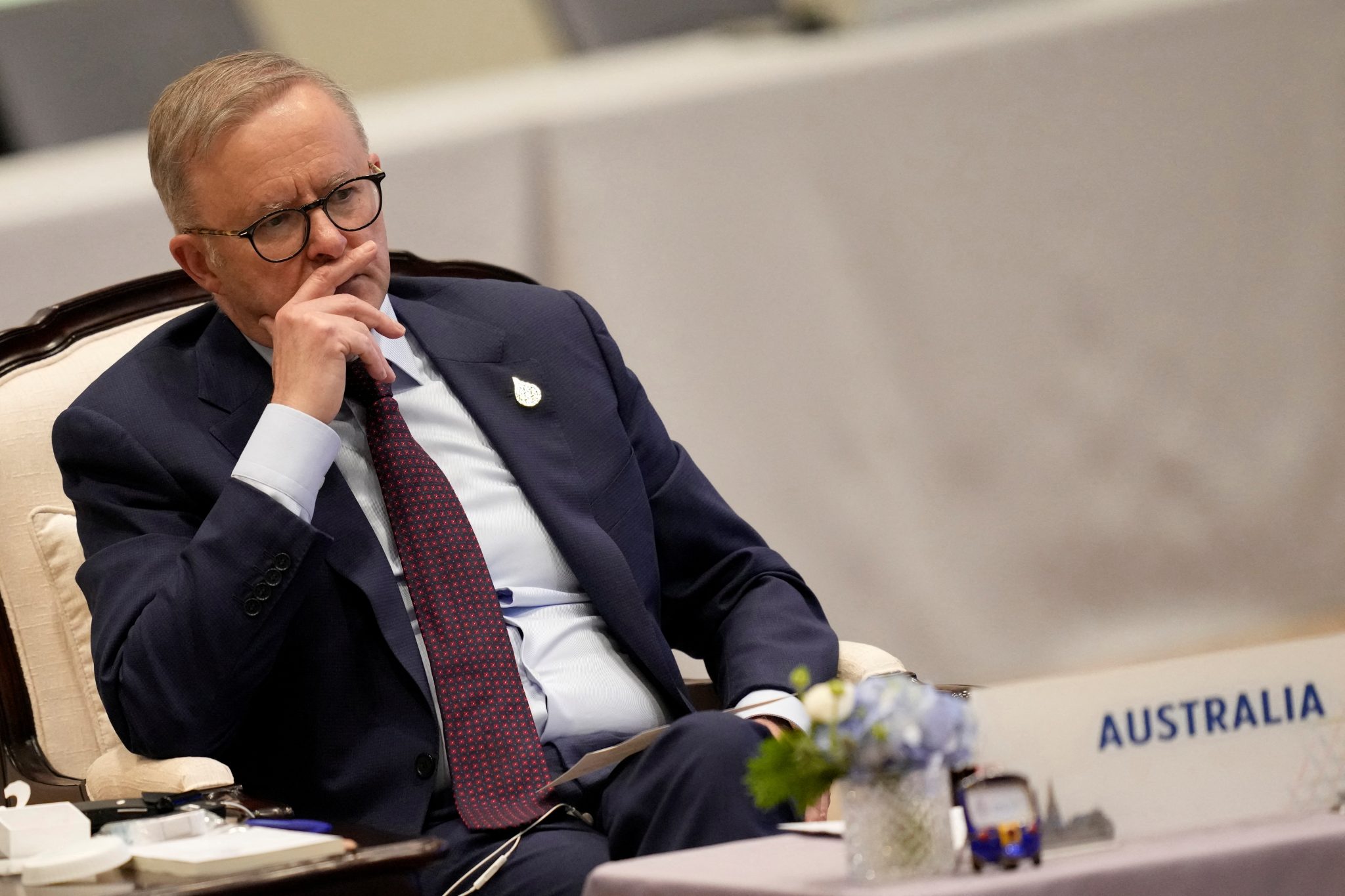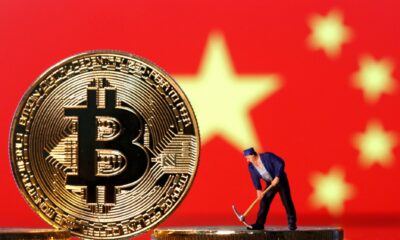Trade
Albanese must aim beyond bilateral outcomes on Beijing visit

Australian Prime Minister Albanese is visiting China, Australia’s largest trading partner, on the anniversary of the establishment of diplomatic relations between the two countries. The economic relationship is crucial, but they also need to address the challenge of carbon emissions and climate change. The two countries have disagreements but should adhere to the principles that guide their relationship. The relationship is important globally and regionally, and Australia must prioritize these principles in its dealings with China. The multilateral trading system is essential for prosperity and security in the Asia Pacific region.
Prime Minister Albanese’s Visit to Beijing on Anniversary of Australia-China Diplomatic Relations
Authors: Shiro Armstrong and Peter Drysdale, ANU
Prime Minister Albanese is set to visit Beijing this week, marking the anniversary of the historic trip made by then Opposition Leader Gough Whitlam in November 1971. This trip led to the establishment of diplomatic relations between Australia and the People’s Republic of China. The relationship between the two countries has grown significantly over the years, guided by principles of mutual respect, non-interference, and peaceful coexistence.
Strong Economic Relationship between Australia and China
China is Australia’s largest trading partner and the largest trading nation globally. In 2023, Australian exports to China exceeded A$200 billion, making Australia the third-largest import supplier for China. Both countries heavily rely on each other for key raw materials and energy, highlighting the fundamental complementarity of their economic engagement. However, the economic relationship also necessitates addressing the shared challenge of carbon emissions and climate change.
The Importance of Upholding Multilateral Rules and Commitments
While Australia and China may have disagreements due to their different political systems and histories, the six principles underpinning their relationship provide a framework for deep economic and political cooperation. Both countries have a responsibility to conduct their relationship in accordance with multilateral rules-based agreements they have ratified. Protecting the international rules-based order is crucial for the stability and prosperity of the Asia Pacific region, making it a top priority in Australia’s dealings with China and globally. Prime Minister Albanese’s commitment to a global strategic path with these objectives and principles sets a positive tone for his visit to Beijing and the expected summit meeting between President Biden and Xi in San Francisco.
Source : Albanese must aim beyond bilateral outcomes on Beijing visit
Trade
Self-Reliance and Openness: Core Principles of China’s Third Plenary Session

The Third Plenum communique from the CCP indicates a prioritization of stability and compromise in response to China’s economic challenges. It highlights the concept of Chinese-style modernization and establishes political guidelines for balancing regulation and market forces.
The CCP’s Third Plenum communique signals a focus on stability and compromise in the face of China’s economic challenges. It emphasises Chinese-style modernisation and sets political directions for balancing regulation and market forces. While not as groundbreaking as previous plenums, it acknowledges the importance of market mechanisms and technological self-reliance, aiming to address issues like high youth unemployment and private sector uncertainty. The communique seeks to navigate the complexities of global competition and domestic innovation, potentially reshaping global supply chains and trade dynamics. Overall, it presents a pragmatic blueprint for China’s economic future.
Source : Self-reliance and openness central pillars of China’s Third Plenum | East Asia Forum
Trade
Trade Prevails Over Political Persuasions in China-Germany Relations

China and Germany maintain a strong bilateral relationship, rooted in economic cooperation despite ideological differences. Recent visits and agreements focus on expanding trade and addressing mutual concerns, navigating challenges while nurturing ties.
Evolving Bilateral Ties
China and Germany share a strong bilateral relationship, rooted in history since 1972. This connection has seen moments of cooperation intertwined with periods of tension. German Chancellor Olaf Scholz’s April 2024 visit underscores Germany’s commitment to fostering this partnership, reflecting a mutual interest in maintaining economic ties despite ideological differences.
Economic Pragmatism
As the second and third largest global economies, China and Germany’s economic interdependence is crucial. Germany emerged as China’s primary trading partner in 2023, with trade values reaching €254.4 billion (US$280 billion). In response to global scrutiny, Germany has taken a balanced approach, emphasizing economic stability over political discord. This was evident during Scholz’s prior visit in November 2022, where his diplomatic tone contrasted with broader EU sentiments.
Facing Challenges Together
Despite increasing public skepticism in Germany regarding China’s global influence and human rights issues, both nations continue to seek common ground. Their October 2023 Joint Statement highlights intentions to pursue cooperation in areas like carbon neutrality and open markets. To navigate these complex terrains, Germany can utilize its institutional frameworks to enhance dialogue, while also considering supply chain diversification to reduce dependency on China. The intertwining nature of their economies suggests that, despite challenges, both countries will continue to prioritize their substantial trade relations.
Source : Trade trumps political persuasions in China–Germany relations
Trade
Fixing fragmentation in the settlement of international trade disputes

Fragmentation in global trade due to the lack of development in multilateral trade rules at the WTO has led to an increase in FTAs. The Appellate Body impasse has further exacerbated fragmentation, requiring a multilateral approach for reform.
Fragmentation in Global Trade
Fragmentation in global trade is not new. With the slow development of multilateral trade rules at the World Trade Organization (WTO), governments have turned to free trade agreements (FTAs). As of 2023, almost 600 bilateral and regional trade agreements have been notified to the WTO, leading to growing fragmentation in trade rules, business activities, and international relations. But until recently, trade dispute settlements have predominantly remained within the WTO.
Challenges with WTO Dispute Settlement
The demise of the Appellate Body increased fragmentation in both the interpretation and enforcement of trade law. A small number of WTO Members created the Multi-Party Interim Appeal Arbitration Arrangement (MPIA) as a temporary solution, but in its current form, it cannot properly address fragmentation. Since its creation in 2020, the MPIA has only attracted 26 parties, and its rulings have not been consistent with previous decisions made by the Appellate Body, rendering WTO case law increasingly fragmented.
The Path Forward for Global Trade
Maintaining the integrity and predictability of the global trading system while reducing fragmentation requires restoring the WTO’s authority. At the 12th WTO Ministerial Conference in 2022, governments agreed to re-establish a functional dispute settlement system by 2024. Reaching a consensus will be difficult, and negotiations will take time. A critical mass-based, open plurilateral approach provides a viable alternative way to reform the appellate mechanism, as WTO Members are committed to reforming the dispute settlement system.
Source : Fixing fragmentation in the settlement of international trade disputes






